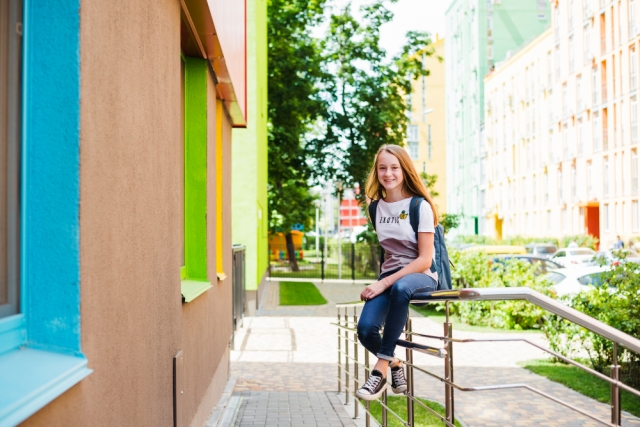Outdoor spaces in schools are often overlooked in favor of classrooms, libraries, and labs. However, the significance of these areas extends far beyond being a place for recess or outdoor physical education. They play a vital role in the holistic development of students, influencing their physical, mental, and social well-being. This blog explores why outdoor areas in schools are essential, and how they can be designed to maximize their benefits.
The Role of Outdoor Areas in Student Well-being
Physical Health Benefits
Outdoor spaces in schools provide students with the opportunity to engage in physical activity, which is crucial for their physical health. With increasing concerns about childhood obesity and sedentary lifestyles, having access to well-designed outdoor areas encourages movement, play, and exercise. These activities help to improve cardiovascular health, build muscle strength, and enhance motor skills.
Outdoor play also offers children the chance to get fresh air and sunlight, which are important for overall health. Sunlight exposure is particularly beneficial for the production of vitamin D, which is essential for bone health. Furthermore, being outside in nature can help to reduce stress levels, improve mood, and boost immune function, contributing to better overall well-being.
Mental and Emotional Benefits
Beyond the physical advantages, outdoor areas have significant mental and emotional benefits. Nature has a calming effect, helping to reduce anxiety and stress. This is especially important in a school setting, where students are often under pressure to perform academically. Time spent outdoors can act as a natural stress reliever, offering a break from the structured environment of the classroom.
Outdoor areas also provide a change of scenery, which can stimulate creativity and enhance cognitive function. Studies have shown that students who spend more time outdoors tend to have better concentration and improved academic performance. The natural environment encourages curiosity, exploration, and a sense of wonder, all of which are key to fostering a love of learning.
Social and Behavioral Benefits
Outdoor spaces also play a critical role in social development. These areas provide a less structured environment where students can interact more freely with their peers, learning important social skills such as communication, cooperation, and conflict resolution. Playing together in an outdoor setting can also help to build friendships and foster a sense of community within the school.
Moreover, outdoor areas can be used to teach environmental stewardship and responsibility. By engaging with nature, students learn to appreciate and care for their environment, which is increasingly important in today's world where sustainability and environmental awareness are crucial.
Designing Effective Outdoor Areas for Schools
Outdoor Classrooms
One of the most innovative uses of outdoor space in schools is the creation of outdoor classrooms. These are areas specifically designed for teaching and learning in an outdoor environment. An outdoor classroom can be as simple as a shaded area with seating or more elaborate with features like chalkboards, whiteboards, or digital screens.
Teaching outdoors offers students a dynamic and engaging learning experience. The natural environment can be incorporated into the curriculum, whether it's science lessons about plant life, art classes inspired by nature, or even literature lessons in a peaceful, reflective setting.
Playgrounds and Sports Areas
Traditional playgrounds remain a staple of school outdoor areas, providing a safe and fun environment for physical play. However, modern playgrounds are evolving to include more than just swings and slides. Incorporating climbing walls, obstacle courses, and sensory play areas can cater to a broader range of interests and abilities, ensuring that all students can find activities they enjoy.
Sports areas are also essential, supporting not only physical education classes but also extracurricular activities. Well-maintained fields for soccer, basketball courts, and tracks for running can encourage students to participate in team sports, fostering teamwork, discipline, and healthy competition.
Outdoor Canopies and Shaded Areas
Outdoor canopies and shaded areas are vital components of school outdoor spaces. These structures provide protection from the sun and rain, making outdoor areas usable throughout the year. Shaded areas can be used for outdoor dining, study spaces, or simply as a place for students to relax and socialize during breaks.
Canopies can be strategically placed near playgrounds or sports fields, offering a refuge for students to cool down after physical activity. They can also serve as outdoor classrooms, where lessons can be held in a sheltered environment that still allows students to benefit from being outside. To ensure the canopy area meets the highest standards of durability and design, many schools turn to companies like Shelter Solutions, which specialize in creating custom, weather-resistant outdoor shelters.
Gardens and Green Spaces
Gardens and green spaces are another excellent addition to school outdoor areas. These spaces not only beautify the school environment but also serve as educational tools. School gardens can be used to teach students about biology, ecology, and sustainability. Involvement in gardening activities helps students to develop patience, responsibility, and an appreciation for nature.
Green spaces can also provide a tranquil area for students to relax, meditate, or engage in quiet activities like reading. Such areas are particularly beneficial for students who may feel overwhelmed by the more active parts of the school environment.
Outdoor Learning Trails and Exploration Zones
Another creative idea for outdoor spaces is the introduction of learning trails and exploration zones. These are designated paths or areas where students can engage in exploratory learning activities. For example, a nature trail might include information on local wildlife, plants, and environmental science topics. Exploration zones can have interactive stations where students can conduct simple experiments or observe natural phenomena.
These areas encourage active learning and can be integrated into various subjects, making learning more hands-on and engaging.
Conclusion
The outdoor areas of a school are more than just supplementary spaces; they're integral to students' development. From promoting physical health to enhancing mental well-being and fostering social skills, well-designed outdoor areas offer numerous benefits. By investing in outdoor classrooms, playgrounds, canopies, gardens, and learning trails, schools can create an environment that supports their students' holistic growth.






